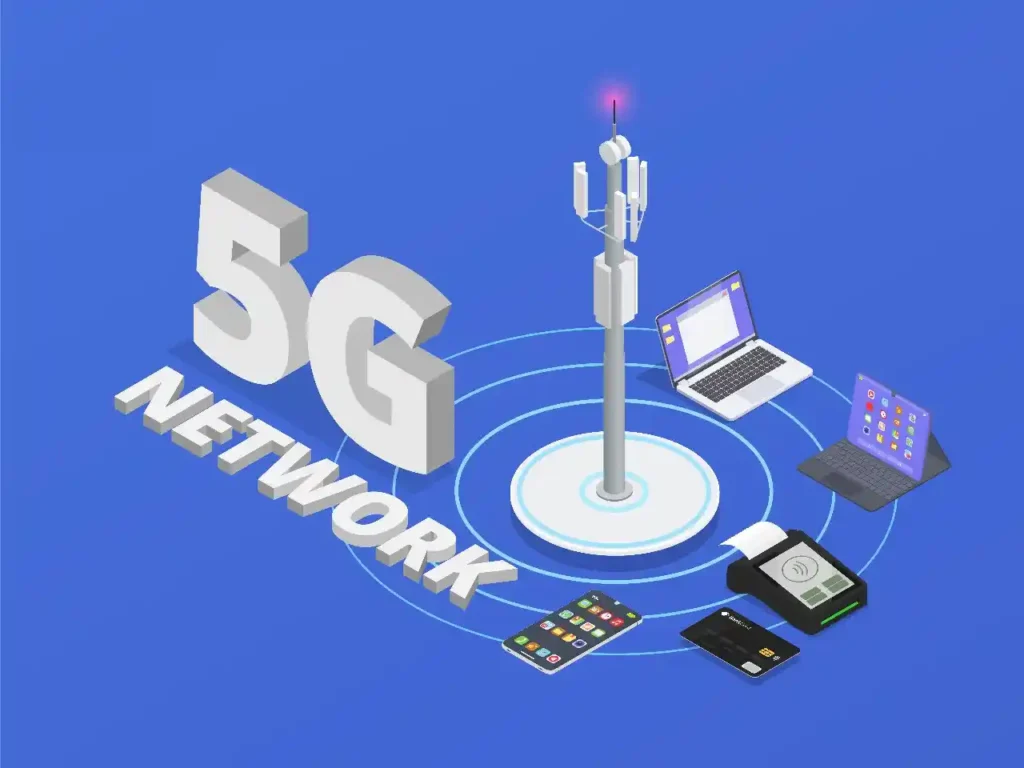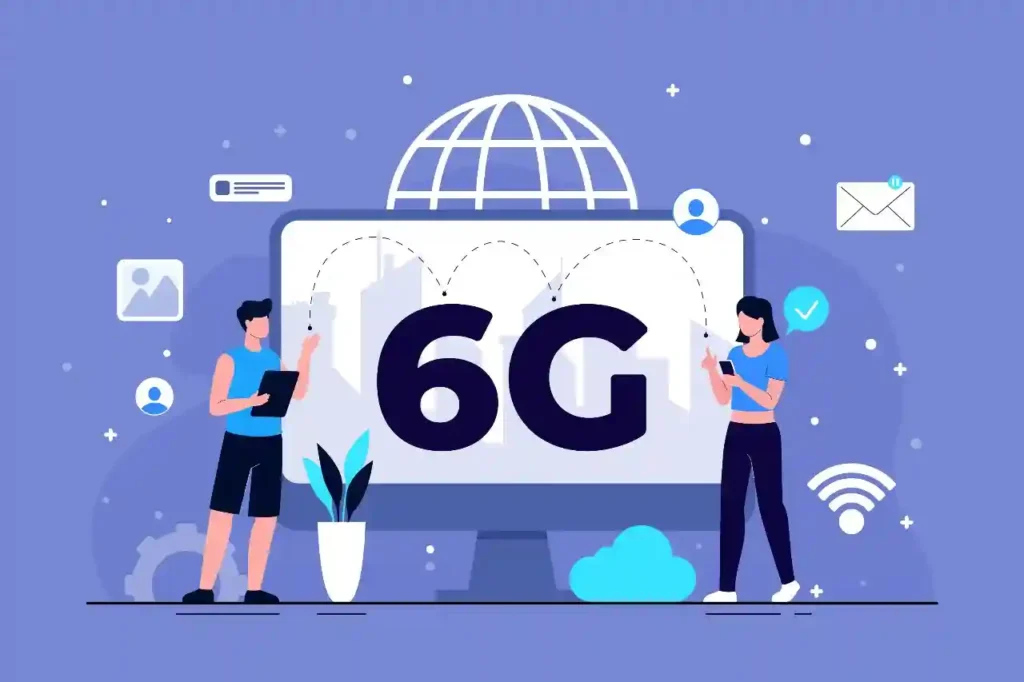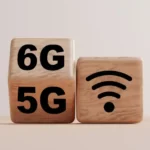Now Reading: The Super-Fast Future: Your Guide to Wireless 5G and 6G Technology
-
01
The Super-Fast Future: Your Guide to Wireless 5G and 6G Technology
The Super-Fast Future: Your Guide to Wireless 5G and 6G Technology

Explore the amazing future of wireless 5G and 6G technology. Learn how 5G is changing our world right now with faster speeds and smarter devices. Then, look ahead to 6G, a new network that will use AI to connect everything by 2030. This is your guide to the next generation of connectivity.
Do you remember when videos on your phone used to stop and load? That annoying wait is called “buffering.” For many years, 4G wireless made our phones fast. But now, wireless 5G and 6G technology is changing everything.
5G is the “fifth generation” of wireless. It is rolling out across the world right now in 2025. It is more than just faster phones. In contrast, it is the key to a new world of connected gadgets.
But technology never stops. Scientists are already working on 6G, the sixth generation. This blog will explore the amazing world of 5G. We will also look ahead to the incredible future of 6G.
What Makes 5G So Different from 4G?
Many people think 5G is just “faster 4G.” It is much more than that. The 5G vs 4G differences are huge. They change how we use the internet.
1. It’s Not Just Speed, It’s SUPER Speed
First, let’s talk about speed. 4G was fast, like a car on a highway. You could stream movies. 5G is like a rocket ship. It can be 10 to 100 times faster.
With 5G, you can download a full movie in seconds, not minutes. This is called multi-gigabit speed. This speed opens doors for things like 8K video streaming and realistic virtual reality games.
2. Getting Rid of Lag (Ultra-Low Latency)
Have you ever pressed a button in a game and had to wait a split second for it to work? That is “latency,” or lag. 4G has a latency of about 50 milliseconds. That is a very short time, but we can still feel it.
5G has ultra-low latency. This means the lag is almost zero, as low as 1 millisecond. Therefore, it feels instant. This is super important for things that need to be in real-time. For example, it helps self-driving cars talk to each other instantly to avoid crashes.
3. Connecting Everything at Once (Massive MIMO)
Think of a 4G tower like a person trying to talk to ten people at once. It gets crowded. This is why your phone slows down at a crowded concert or sports game.
5G uses a new idea called Massive MIMO. MIMO stands for “Multiple-Input Multiple-Output.” In other words, the 5G tower has hundreds of small, smart antennas. It can talk to millions of devices at the same time without slowing down. This is the key to connecting our whole world.

The Real-World Benefits of 5G for IoT
The biggest change with 5G is not for people. Instead, it is for “things.” IoT, or the “Internet of Things,” is the idea of connecting everyday objects to the internet. 5G makes this possible on a huge scale.
Connecting Every Gadget (Benefits of 5G for IoT)
Because 5G can handle millions of devices, it is perfect for the benefits of 5G for IoT. Your smartwatch, your fridge, your car, and your lights can all be connected. They can all talk to each other smoothly.
This creates true smart cities. 5G can connect every traffic light to make traffic flow better. It can connect trash cans to tell garbage trucks when they are full. This saves time and energy.
Making New Tech Possible with Edge Computing
5G’s instant response helps create brand-new technology. For instance, doctors can perform surgery from hundreds of miles away using a robot. The 5G connection is so fast and stable that the robot moves the instant the doctor moves their hand.
This also works with edge computing. Edge computing means we put tiny, powerful computers closer to you. Instead of sending data far away to a big “cloud” server, 5G sends it to a local edge computer. As a result, your autonomous vehicles or virtual reality headsets can get an answer instantly.
Understanding 5G Network Speed and Coverage in 2025
So, if 5G is so great, why isn’t it everywhere in 2025? The answer is in the telecom infrastructure. Building a new network is a big, expensive job.
The Challenge of Super-Fast Signals
5G uses different types of radio signals. The fastest 5G speeds come from millimeter wave (mmWave) signals. These signals are very powerful.
But, they also have a weakness. They are very short. They cannot travel far. They can also be blocked by walls, trees, or even rain. To make mmWave work, companies must build many small cell towers, putting them on almost every street corner. This takes a lot of time and money.
Different “Flavors” of 5G
Because of this challenge, you will see different types of 5G:
- Low-Band 5G: This uses signals that travel very far, like 4G signals. It gives you great 5G network speed and coverage. However, the speed is only a little faster than the best 4G.
- Mid-Band 5G: This is the “just right” 5G. It is much faster than 4G. It also has good coverage. This is the type most companies are building out in cities and suburbs in 2025.
- High-Band 5G (mmWave): This is the super-fast, rocket-ship 5G. You will only find it in small, specific areas. Think sports stadiums, airports, and very crowded downtown areas.
Slicing the Network and Using Satellites
5G has another cool trick called network slicing. Imagine 5G is a giant, 10-lane highway. With network slicing, a company can reserve a private lane just for one job.
For example, a hospital can have its own private 5G “slice.” This lane is just for their ambulances and doctors. It is super-fast and will never get slowed down by people streaming movies. Meanwhile, another slice can be for low-power IoT sensors.
Also, 5G is working with satellite internet. Companies are using satellites to bring mobile broadband to places where it is hard to build towers. This includes farms, ships at sea, and remote villages.
The Next Big Leap: Wireless 5G and 6G Technology
5G is still being built, but scientists are already designing 6G. The 6G research and development timeline is in full swing. This next generation is not just about speed. It is about intelligence.
What is 6G?
6G is the “sixth generation” of wireless. It will likely start to appear around the year 2030. If 5G connects things, 6G will connect intelligence.
The main idea behind 6G is to create AI-native networks. This means Artificial Intelligence (AI) will be built into the very core of the network. The network will be able to think, predict, and act on its own.
The 6G Research and Development Timeline
Right now, in 2025, we are in the early research phase.
- 2024-2026: Scientists are defining what 6G needs to do. They are asking, “What problems do we need to solve?”
- 2027-2028: Engineers will start building and testing the first 6G technologies.
- 2028-2030: We will see the first pre-commercial trials.
- Around 2030: The first 6G networks will be launched for the public. This will be the new wireless communication standards 2030.
How Will 6G Change Our World by 2030?
6G sounds like science fiction. It will blend the real world and the digital world in ways we can only imagine. It will work in the “Terahertz” spectrum, a new, even higher-frequency band.
Holograms and Digital Twins
With 6G, speeds could be 100 times faster than 5G. The latency will be so low it is measured in microseconds. This is fast enough for real-time holograms. You could “beam” a 3D version of yourself into a meeting across the world.
It will also power “digital twins.” A digital twin is a perfect, real-time computer copy of a real-world object. For example, we could have a digital twin of an entire city. We could test new traffic plans on the digital twin before building them in the real world.

A Network That Can Sense
This is the strangest and coolest part of 6G. 6G will use its signals to sense the world around it. It will act like radar.
Your 6G network will be able to see where objects are in a room. It could find your keys. It could feel the air quality. It could even track your gestures. You might control your next-gen smartphones just by waving your hand in the air, with no camera needed.
4G vs. 5G vs. 6G: A Simple Comparison
Here is a table to help you see the differences.
| Feature | 4G (What we had) | 5G (What we have now) | 6G (What is coming) |
| Main Goal | Fast Mobile Internet | Connecting Everything (IoT) | Connecting Intelligence (AI) |
| Top Speed | ~100 Megabits/second | 10-20 Gigabits/second | 1 Terabit/second (1,000 Gbps) |
| Latency (Lag) | ~50 milliseconds | ~1 millisecond | ~0.1 milliseconds (or less) |
| Key Tech | Mobile Broadband | mmWave, Massive MIMO | AI-Native, Terahertz Sensing |
| Best For | Streaming HD Video | VR, Smart Cities, IoT | Holograms, Digital Twins |
The Challenges We Must Solve for 6G
Building 6G will not be easy. There are huge challenges to solve before 2030.
Finding the Space (Spectrum Allocation)
To get 6G speeds, we need to use new, ultra-high frequencies called Terahertz waves. This is part of spectrum allocation. These signals are even shorter and more fragile than 5G’s millimeter waves.
Scientists must invent new kinds of antennas and materials. These new antennas will need to aim these signals with perfect, pinpoint accuracy.
Power and Security
Running a network that is 100 times faster and “thinks” with AI will use a lot of power. A major goal of 6G research is to make it very energy efficient. We need a “green” network.
Furthermore, a network that can sense your location and gestures raises big privacy questions. We must build 6G to be secure from the start. We must trust that our data is safe.
Conclusion:
The world of wireless 5G and 6G technology is moving incredibly fast. 5G is here today. It is building a world of connectivity for smart cities and autonomous vehicles. It is the foundation.
But 6G is the future. It is a smart, “living” network that will blend our digital and physical lives. It will bring us ideas like holograms and thinking networks. The work being done today is building the world of 2030 and beyond. The future is connected, and it is coming faster than ever.
FAQs
5G is not just faster; it has ultra-low latency (no lag) and can connect millions of devices at once, which 4G cannot.
Its low lag and massive capacity power the Internet of Things (IoT). This allows for smart cities, connected cars, and even remote surgery.
6G is still in the research phase. Experts predict the first public 6G networks will launch for commercial use around the year 2030.
6G will be 100x faster and use artificial intelligence (AI). The network itself will be able to think, predict, and even sense objects.
The future of wireless 5G and 6G technology is a smarter world. 5G connects our things (IoT), while 6G will connect intelligence (AI) for holograms.

Ethan Cole is an American journalist with expertise across weather, tech, travel, and culture. With over 15 years of experience, he delivers sharp, reader-friendly stories that simplify complex topics and connect with audiences worldwide.
Stay Informed With the Latest & Most Important News
Previous Post
Next Post
-
 01Happy Gilmore 2: Your Complete Guide to the Golf Comedy Sequel
01Happy Gilmore 2: Your Complete Guide to the Golf Comedy Sequel -
 02Joe Root’s Test Runs: England’s Batting Genius in Focus
02Joe Root’s Test Runs: England’s Batting Genius in Focus -
 03The Bad Guys 2 (2025): Everything We Know So Far
03The Bad Guys 2 (2025): Everything We Know So Far -
 04Demon Slayer: Kimetsu no Yaiba The Movie: Infinity Castle Tickets – Your Guide to the Epic Anime Event
04Demon Slayer: Kimetsu no Yaiba The Movie: Infinity Castle Tickets – Your Guide to the Epic Anime Event -
 05RTX 50 Series Unleashed: Next-Gen Gaming Power Awaits!
05RTX 50 Series Unleashed: Next-Gen Gaming Power Awaits! -
 06The Naked Gun 2025: What to Know About the Comeback Comedy Starring Liam Neeson
06The Naked Gun 2025: What to Know About the Comeback Comedy Starring Liam Neeson -
 07Freakier Friday 2025: Full Cast Breakdown, Plot Twists, Musical Throwbacks & Streaming Info
07Freakier Friday 2025: Full Cast Breakdown, Plot Twists, Musical Throwbacks & Streaming Info














